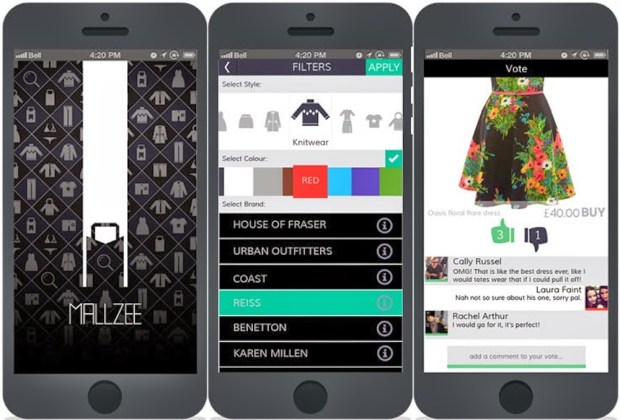Quick Swiping, Long Learning And A Better Way To Build A Fashion Marketplace

Since its launch in 2013, Mallzee has been informally designated the “Tinder of fashion” in the U.K., where the company is headquartered (specifically Edinburgh).
The online fashion marketplace doesn’t help its users find love — at least not love with a human being. No, the only relationship consumers on Mallzee’s platform are searching for is one with the perfect outfit or just the right handbag. To aid in that pursuit, Mallzee created a digital mall where consumers can compare scores of retail brands.
The benefit for the consumer is pretty obvious: Instead of having to open and toggle between a bunch of brand’s mobile sites or apps, the Mallzee consumer can peruse a digital mall where those comparisons can be easily made within a single location. When they find what they like, they can virtually bag it up and check out.
The benefit to the merchant, however, can be harder to see. Mallzee has just over a million downloads of its mobile app. Those users are doing their shopping in Mallzee’s marketplace instead of through a brand’s website. It’s the plight of marketplace merchants everywhere: more digital foot traffic in the virtual mall but less control over the consumer relationship — and the ever-present risk of disintermediation.
However, Mallzee offers its retailers more than just a space to sell their wares.
It’s also marketing a platform where brands can learn about their consumers by allowing retail partners to test and analyze product response by showcasing their goods on Mallzee and gauging a customer’s reaction — all before any orders are placed. That feature, Product Future, is how the company earned its “Tinder of fashion” moniker, since the way a user “votes” on an object is by swiping right to like an item or left to dislike it. Items approved of with a right swipe are added to the customer’s unique style profile, which Mallzee uses to make future recommendations.
The consumer also receives a notification if an item they liked goes on sale.
The point, according to the firm’s CEO Cally Russell, is to rebuild the “broken” mobile retail experience that works poorly for both the customer and the retailer and replace it with something that provides value to both — by allowing the myriad data points thrown off via transactions to be molded into something useful for merchants.
“We’re B2C2B,” Russell explained in an interview. “We use the data from the consumers to inform the brands.”
Building Better Data Sets
The streamlined shopping experience is key to the offering, because it allows Mallzee to get a feel for customer motion across multiple brands in a wider marketplace context. Retail data mining operations of the past, he noted, suffered from the weakness of “not really bring[ing] in other data sources.”
Those models, though not without their uses, were, by design, reactive and not proactive. The retailer always had to play catch-up.
In the past, that hasn’t always translated to the easiest or most obvious of sales. The problem with novelty in an offering, according to Russell, is that one has to really build a case for it, since the person who it’s being pitched to has no precedent to make a comparison.
The selling point of Mallzee, he said, is its testing capability — the Tinderizing of retail — which provides that unique value.
“We quickly realized there was a major opportunity for us to utilize our engaged audience as a testing zone for these partners’ new products, helping buying and merchandizing teams make informed stock decisions based on real data, to improve sell through success. The results have been amazing, and the interest we’ve had speaks for itself — we’ve seen more companies test products last quarter than in the rest of 2017 combined,” Russell said.
That big growth has spurred the firm toward more in 2018 — with a new funding round worth $6.5 million. Most of that, Russell noted, will go toward developing and marketing Product Future, since the portal has shown early strength.
Beyond that will be lots of methodical planning.
“You need to think, ‘This is where we are today; where will we be in six months, 12 months, 36 months?’ That decision could potentially be the worst one I ever made — or it could be the best — I don’t know. We’ll see in a couple of years’ time,” Russell said.
